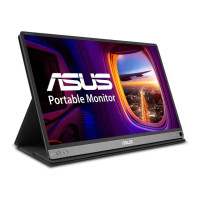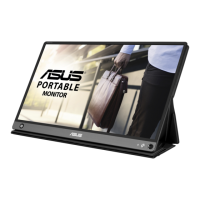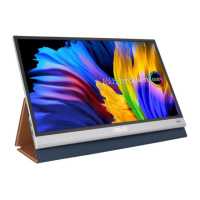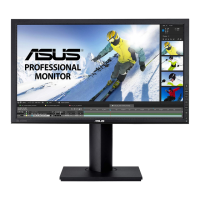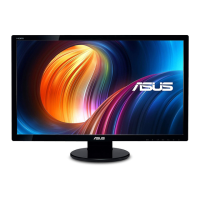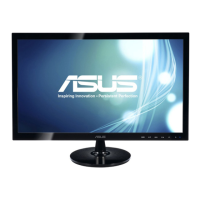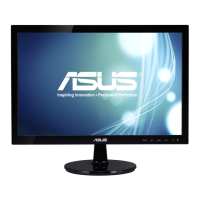3-15
Chapter 3: General Instructions
3.3 Troubleshooting (FAQ)
Problem Possible Solution
PowerLEDisnotON • Press the Power button to check if the monitor is
turned on.
• Check if the adaptor is properly connected to the
monitor and the power outlet.
• Check the Power Indicator function in the
OSDmenu.Select“ON“toturnonthePower
LED.
• Make sure the USB Type-C or HDMI cable is
properly connected between the Portable Monitor
and the computer.Then check if the signal source is
turned on.
ThepowerLEDlightsamberand
there is no screen image
• Check if the monitor and the computer are turned
on.
• Make sure the USB Type-C or HDMI cable is
properly connected between the Portable Monitor
and the computer.
• Inspect the signal cable and make sure none of the
pins are bent.
• Connect the computer with another available monitor
to check if the computer is properly working.
Screen image is too light or dark • AdjusttheBrightness setting via OSD.
• USB Type-C cable can be used to light up the
screen. If the power supply specification is less than
15W, you need to use an adapter instead.
• When the device is powered by USB Type-C, please
use a power supply above 15W. If the power supply
is between 15 and 27W, some functions may be
limited.
Screen image bounces or a wave
pattern is present in the image
• Make sure the USB Type-C or HDMI cable is
properly connected between the Portable Monitor
and the computer.
• Move electrical devices that may cause electrical
interference.
Screen image has color defects
(whitedoesnotlookwhite)
• Inspectthesignalcable(USBType-CorHDMI)and
make sure that none of the pins are bent.
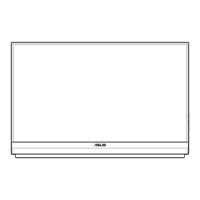
